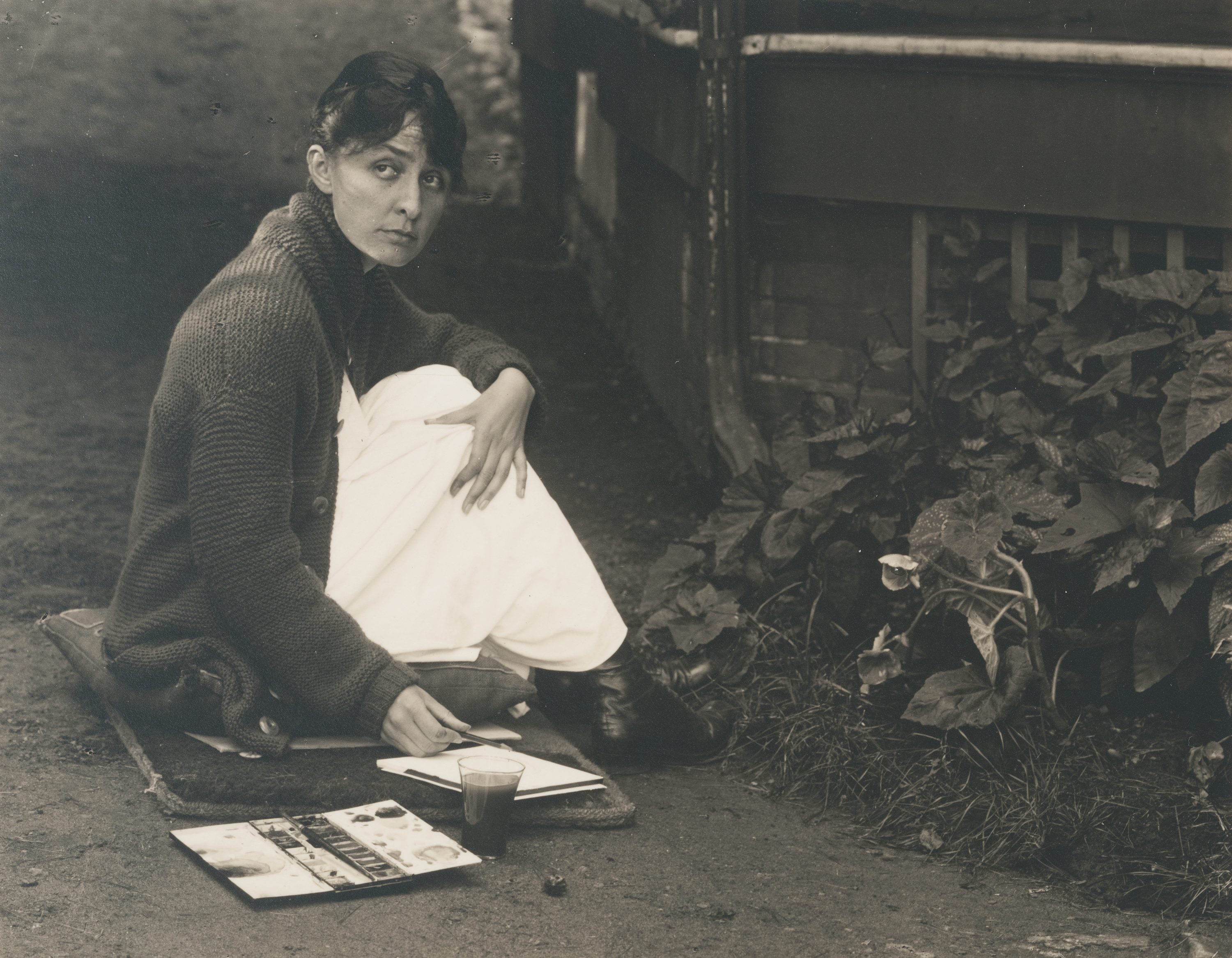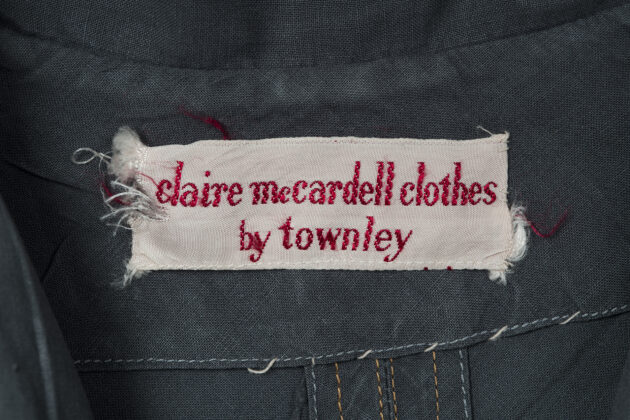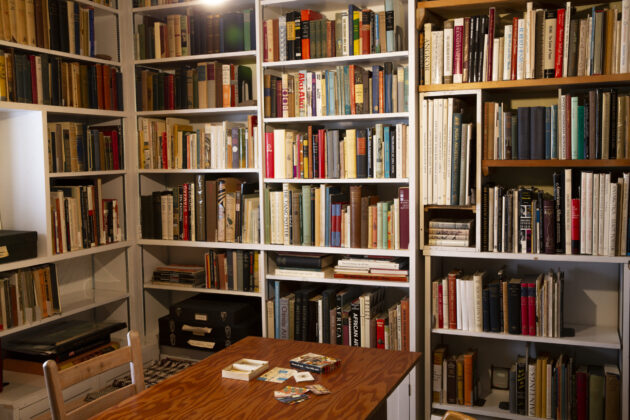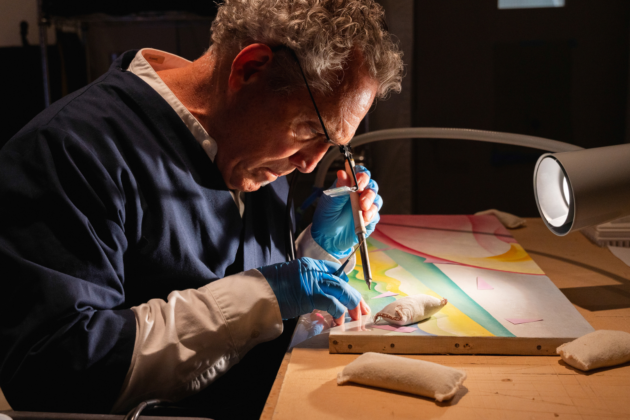
Let The Research Center Help You Write a Love Letter
The Research Center has long been known as the most romantic part of the machine that makes the Georgia O’Keeffe Museum run. This is due almost entirely to the fact that on the shelves of the Research Center Library one can find Sarah Greenough’s My Faraway One; a collection of thousands of letters between Georgia O’Keeffe and her lover and husband Alfred Stieglitz (though you can also find the book at the museum store, or online). As Resident Experts on the topic of romance, we have taken it upon ourselves to help you out this Valentine’s Day—to give you a few tips on how to write a love letter to Your Faraway One.
First, set the scene. Help the recipient of the letter see what you see as you are writing to them. Physically, what is the world around you like? How are you interacting with it? Are you cold? Are you hot? What does the sky look like? It helps if you are somewhere where the sky is “wonderful” or “electric” or “big.” If it isn’t any of those things, try going somewhere else.
“Such a wonderful big starlight—it was cold—the wind stung my face so that I wondered was it cold or hot” (GOK-AS 10/31/1916)
“It’s about twenty-five degrees in the room here.—New York is an icy grip—but the sun is out bright & clear.” (AS-GOK 2/6/1917)
“Monday, 7:30 Evening.—There is an electric storm—incessant lightning—rain—hardly any thunder—rain.” (AS-GOK 7/2/1917)
Next, acknowledge that there is distance between yourself and Your Faraway One. This creates romantic tension, or longing, or desire. You might express regret at your lack of communication. Perhaps you haven’t had the chance to write because you are busy; maybe you have been painting Blue Lines No. 1 or settling into a regimen at your new job. Either way, this section of the letter gives you a great opportunity to catch the recipient of the letter up on everything you’ve been doing.
“I’ve wanted so much to write you—but I’ve done so many other things that I couldn’t do it when I wanted to or didn’t want to when I could” (GOK-AS 9/20/1916)
“It’s been a Day of Days! Every moment of the day—beginning with the sunrise…& finally sunset…all day long I was very active—on my feet.” (AS-GOK 9/27/1916)
“My regular routine (I hate doing things by the clock—have always hated to do things at any stated time) only takes twelve hours a week—but last week I seemed to fill up every minute of day and night with something.” (GOK-AS 9/20/1916)
“There is something aggravating about the fact that the last scrap I wrote you is still on the way to you—that it takes such a long time to talk to you—
“But this has been such a great day—a queer day—I’ve been so amused with myself—I must tell you—“ (GOK-AS 10/9/1916)
You want to fill the body of your letter with feeling. For the most part, it will not make sense. That’s OK. If you feel the need for a dramatic shift in time, space, or mood, a dash (–) is a very useful tool. Feel free to ramble, and feel free to make grand assumptions. In fact, just feel free, generally.
“I don’t know—I seemed to be all choked and I couldn’t swallow—
“And I came in and cried and cried and cried and –only shed about three tears…
“I wanted to kiss it—it seemed made for lips—but I didn’t—because it’s only a paper—I still want to hold it in my hands and I still want to kiss it—“ (GOK-AS 2/10/1917)
“Am I experimenting with you?—Not more than I do with my own mother or child or self.—Living is experimenting.—And if I do experiment it is with a passion at white heat—experiment not in cold blood—just mind & body—heart—with All of Me.
“And what is the experiment?—
“You know what it is as well as I do.—You yearn for someone to understand every heartbeat of yours—to take every heartbeat—every thought—conscious—& otherwise—for what they are.—And you well know no one can understand so fully—but some come nearer to it than others—some very near—The yearn goes out—whether you wish it or not—to others who are feeling as you do.—Sensitive ones.—Reason steps in—not cold reason—warm reason—living reason—helps us see—We want so badly to see—See what?” (AS-GOK 11/18/1916)
You might want to take back some or all of what you said. While it’s great to stick to your guns, it may also be wise to display some self-awareness about how crazy you might have sounded in the “feel free” section of your letter.
“I wonder why I just told you that now” (GOK-AS 9/20/1916)
The last movement of the love letter requires a delicate touch. But you’re ready to pull it off. You’ll end your letter by fastening together the skills you displayed in Step One (describing the things you see) with the feelings about the person which you let loose in Step Three, to create an image wherein Your Faraway One is immediately present in the world around you. I’ll let O’Keeffe serve as the definitive example of this delicate final act.
“All the world greets you this morning. It’s very quiet—The smoke goes up straight—On my way to the post office I noticed many birds—
“It’s a dream—closed eyes—a great quiet that I send you this morning—
“The words look queer but the dream is past human—“ (GOK-AS 2/10/1917)
This article was written by Tim Hone, Research Center Intern


